On one of my weekly trips to Hypercity (the most well stocked supermarket in the burbs) I found myself sniffing around as the unmatchable fragrance of the Jackfruit wafted towards the aisle where I was picking my groceries. I left whatever I was doing to rush to the fresh fruit section and there! I saw the gorgeous sight of ripe yellow ‘Ghare’ (pods) of jackfruit being picked and kept for sale. “Wow” was my first reaction to this scene and I ran to pick the juiciest of the season’s bounty. The price was a rip off obviously for a person like me who has spent her whole life eating free Jackfruits at home (and shunning them later when I had had enough). So I bought a kilo for 120 bucks and came home happily with my prized possession. The sweet fragrance of the Jackfruits quickly filled my house and we had a few juicy ones before I jealously guarded the remaining ones to be used for making
Mangalore’s most famous seasonal snacks – Patholi & Gariyo
When my mum-in-law arrived to spend a few days with us, she was surprised that I had already bought some Jackfruit home when in Mangalore the ones on the trees were still in the process of ripening. Together we set out to make the two delicacies. We made the batter and then split it into half to be used for the two as the ingredients remain the same. If you like to make a small batch of the two, the quantities given below are ideal. You can even make the batter in one go & deep freeze half of it & use it later.
The Jackfruit tree is just as famous as the Coconut Tree in South India, known for its various uses. While the raw Jacfruit (called as ‘Khadgi in Konkani) is used in curries and stir fries (sukhe – see recipe), the ripe one (Ponos) with the juicy flesh is eaten raw or cooked in sweet delicacies as mentioned above. The seeds of the jackfruit are dried in the sun and used along with other vegetables in gravies. While the seeds are called as the ‘Bikna’ in Konkani, the singular form is not called ‘Bikon’ (Bug/Pest in Konkani ), its called as ‘Bikaan’. The Jackfruit leaves are shaped into small ‘katoris’ and used to steam a typical Mangalorean idli called the ‘Kottige’ (my mouth is watering already). I hope to be able to make it someday if I manage to get some leaves back from Mangalore.
While most Mangaloreans/Keralites love the Jackfruit, many North Indians I know run away from the strong fragrance. The Jackfruit is almost similar to the ‘Durian’ which Thai’s love so much if you have visited Bangkok.
Do check out the video of how to make this delicacy! I hope you enjoy it!
If you liked this video please do subscribe to my channel! Also, like, share & comment on it! It will really really motivate me to shoot more videos! If you’d like to reach out to me, please email me at ruchikrandhap@gmail.com
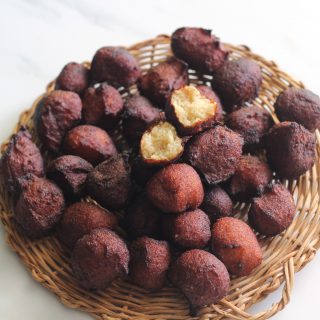
Ingredients
- 1 kg (4 cupfresh Jackfruit pods cleaned & roughly chopped * see notes
- 1 cup boiled rice Ukdo in Konkani/Ukda in Hindi
- 1/3 rd cup raw rice Surai in Konkani - you can use Kollam/Basmati rice
- 120 -175 grams powdered jaggery - adjust to taste
- 1/4 tsp pepper powder
- pinch of salt
- 3/4 th cup grated coconut only for the Gariyo
- rice flour to thicken the batter as required
Instructions
- Wash & soak the rice in sufficient water for at least 3 hours. Remove the seed from each pod and retain the seeds (to be used in curries). Roughly chop the jackfruit pieces.
- After 3 hours completely drain the rice and grind it along with the jackfruit pieces, jaggery, pinch of salt and pepper powder to a fine paste. The batter should be thick & dryish like dosa batter. The moisture in the jackfruit is enough to get the grinding going & hassle free.
- Add the grated coconut to the batter (without grindinor you can even grind it if you wish.
- Heat oil for deep frying in a deep heavy bottomed pan. When it has heated sufficiently (not smoking hot - but passes the drop tesreduce the flame to medium high & gently put about two tablespoons of batter at a time (lime sizeinto the oil. Fry the fritters by tossing them gently so all the sides are uniformly cooked, till the outsides look golden brown. Remove before they turn black - they should have the colour of gulab jamoons.
- Place on an absorbent kitchen towel to drain off the excess oil.
- Serve hot with a cup of hot tea. They taste best when they are slightly cooled as you can get to taste the sweetness of the Jackfruit with the hint of Jaggery & Coconut. Gariyos keep well for 4-5 days in an airtight box.
Notes
The jackfruit pods should be cleaned of the seed & pith and then weighed. I have used 1 kg of cleaned and ready to eat jackfruit pods. However you may adjust the amount of fruit used according to your taste and according to the sweetness of the fruit.
Disclaimer
The nutritional values are only indicative.
Tried this recipe?Please leave a comment & rate the recipe below or share a photo on Instagram and tag me @ruchikrandhap
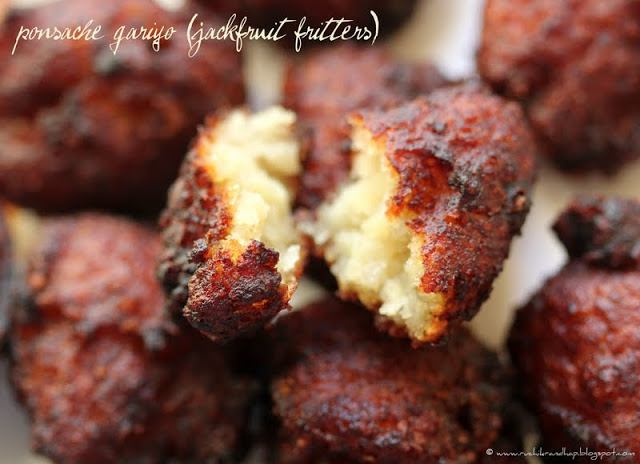
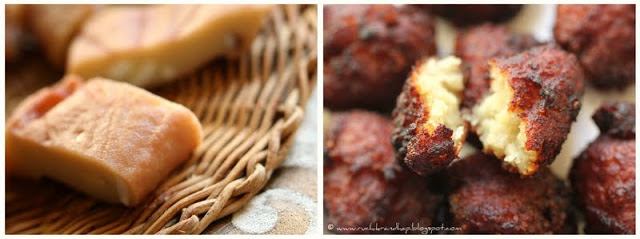
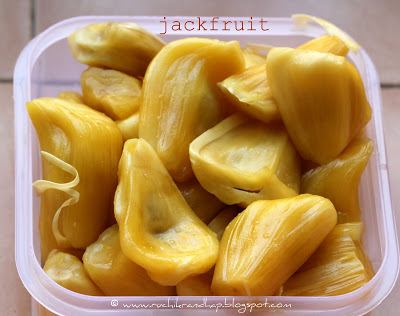
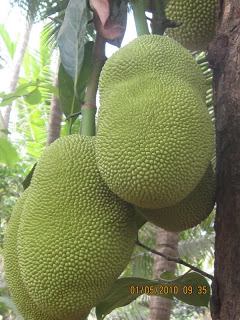
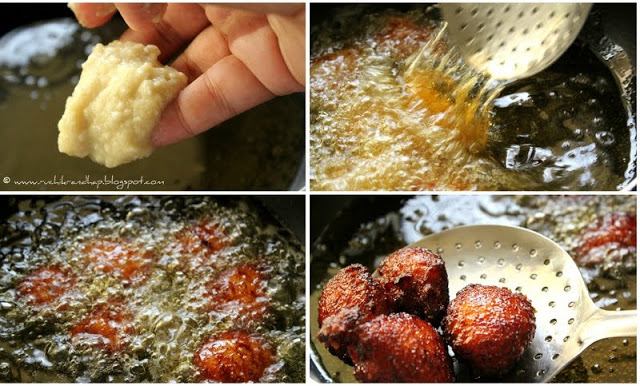
Hi Shireen,
I’d made gariyo today and were really good… Video helped a lot… Thank you so much…
Hi Sharal,
Thanks a lot for the feedback! So glad to know that the gariyo turned out well and the video helped you too!
Hello Ms Shireen,,, after a long time I’m here wanting to prep this recipe. Is the rice boiled (cooked) and the other raw? I know there is a rice called boiled rice (raw) so not sure. Pls adv. blessings from Houston
Hi Rita,
The rice varieties are called as raw rice and boiled rice. Boiled rice should not be confused with cooked rice
Thank you for the Jackfruit gario recipe, they turned out excellent, reminded me of my childhood days
Thank you so much for the feedback James!
Thank you for the Jackfruit gario recipe, they turned out excellent, reminded me of my childhood days. Thank you for the wonderful recipe/ video
Hi James,
Thanks a lot for your lovely feedback! Happy to hear that you enjoyed the gariyo so much!